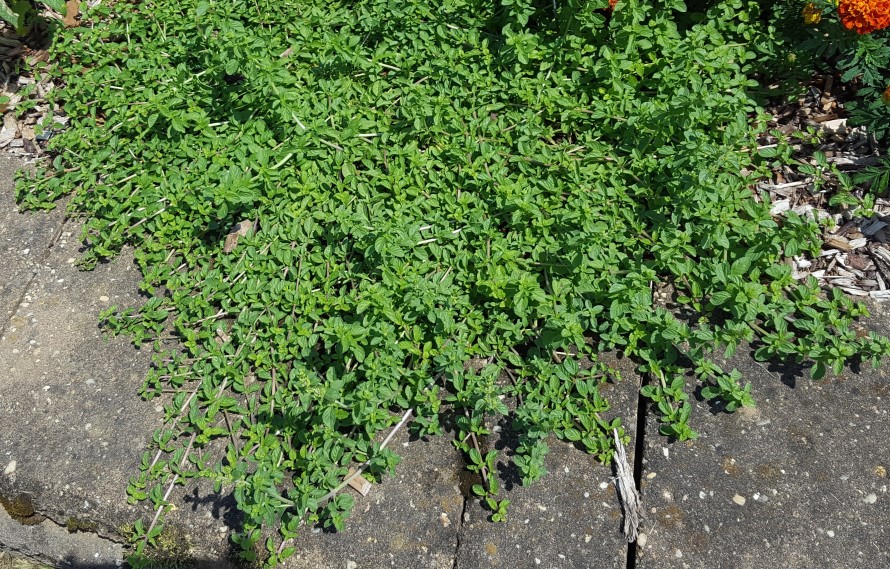
Pennyroyal Flowers
Be careful what you put in your mojito! Pennyroyal (Mentha pulegium), looks like mint, smells like mint and even tastes like mint but unlike mint contains pulegone, an extremely poisonous compound that is toxic to the liver and acts as an abortificant.
Pennyroyal has been used as a culinary herb for thousands of years. Fortunately, its use in food died out during the Middle Ages. In tiny amounts, it doesn’t affect adults but it should never be given to children whose smaller size makes it deadly. Used in herbal teas, even in those small amounts, it is toxic to the liver of adults so it should never be eaten or drunk.
The essential oil is especially deadly because it contains a large concentration of pulegone. Taken internally, even tiny amounts of the essential oil can kill an adult.
Pennyroyal does have its uses. It’s an excellent insect repellent. Since it is not absorbed through the skin, rubbing the leaves on exposed areas of your body can be as effective at repelling mosquitoes as commercial repellents containing DEET. Use the fresh leaves from the plant, not the essential oil which can cause contact dermatitis. The plant also repels fleas. Place leaves inside pet bedding to keep it free of fleas.
Pennyroyal is native to Europe, the Middle East and North Africa and is hardy in zones 6 through 9. It is related to mint, with a smell similar to spearmint. It grows in a mat and makes an excellent groundcover that will crowd out any weeds. While it is not as invasive as mint it should still be grown in containers rather in your garden where it will spread and eventually crowd out the other plants.
Like mint, pennyroyal prefers sun but will tolerate a little shade. Plant it in well-drained soil and keep it moist. It does not like to be dry. Bloomtime is mid-summer. The lilac flowers grow on stems that are 4- to 6-inches tall.
Pennyroyal is easily grown from seed. You can direct sow the seeds in the spring after all danger of frost has passed but before the soil warms. The seeds germinate best in cool soil. It is recommended that you start seeds indoors. Whether grown indoors or outdoors, the seeds should be surface sown. Do not cover them. They need light to germinate. Germination should occur within 10 to 15 days. You can transplant your seedlings outdoors after all danger of frost has passed and they have at least 2 sets of true leaves, not counting the cotyledons.

